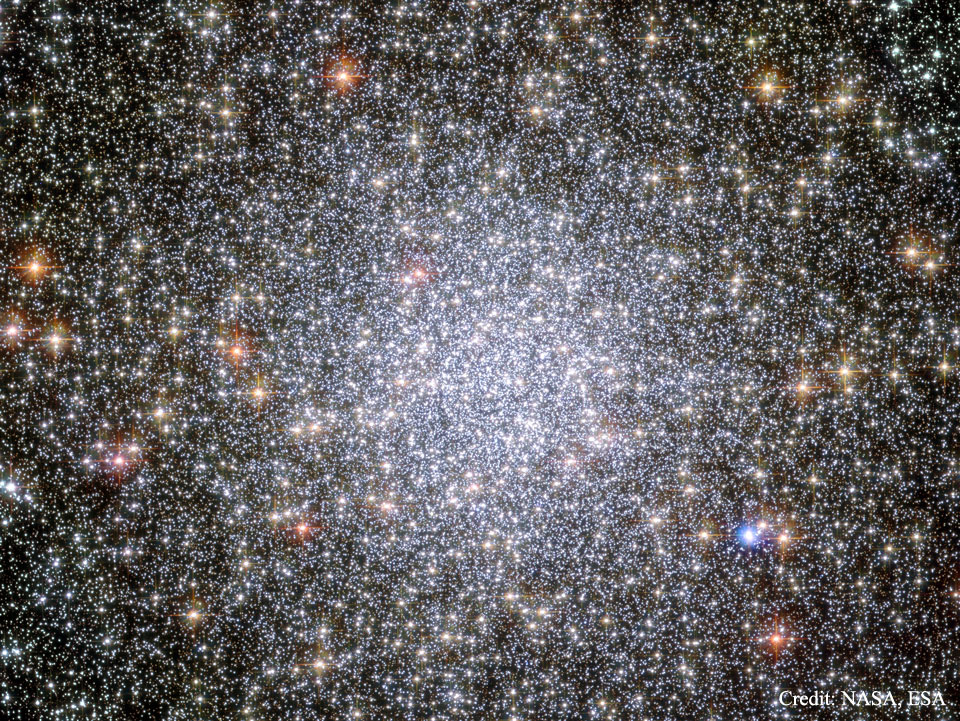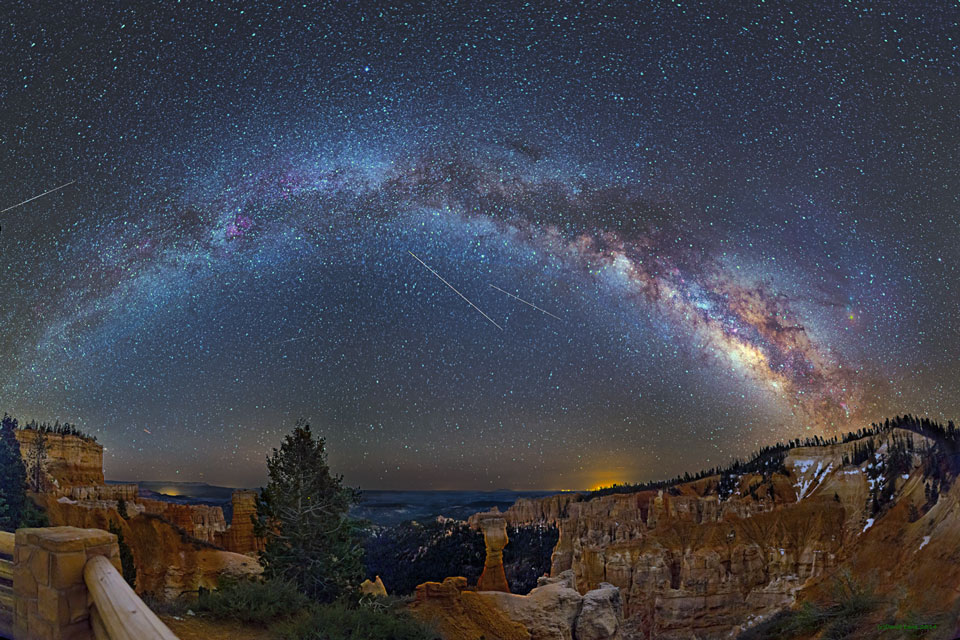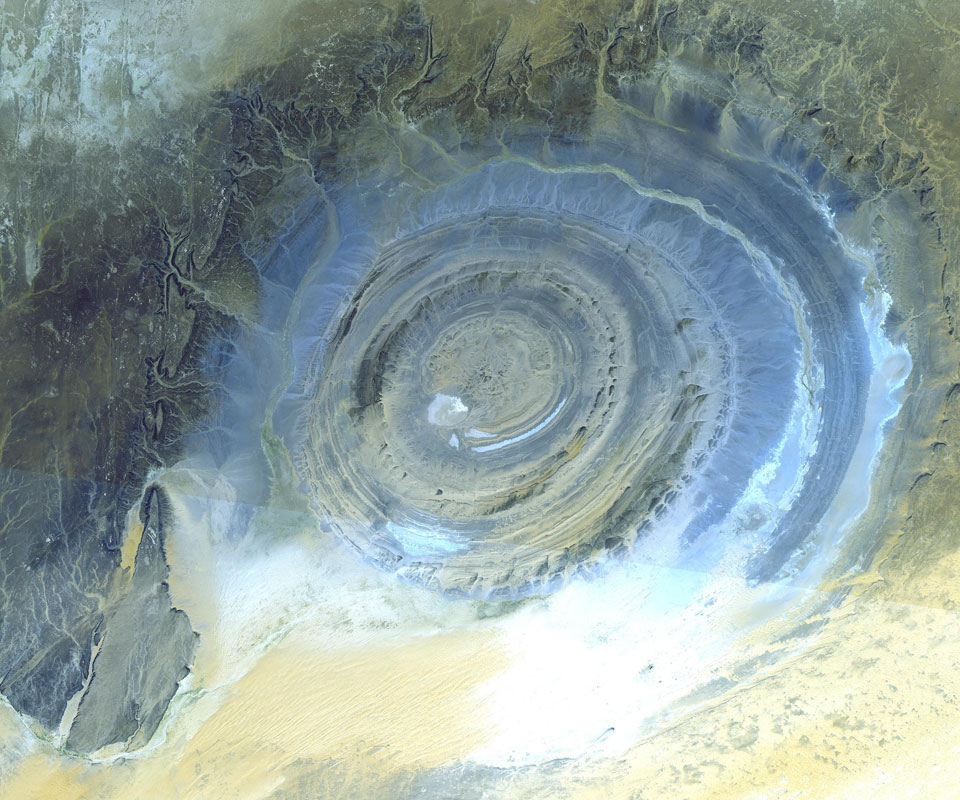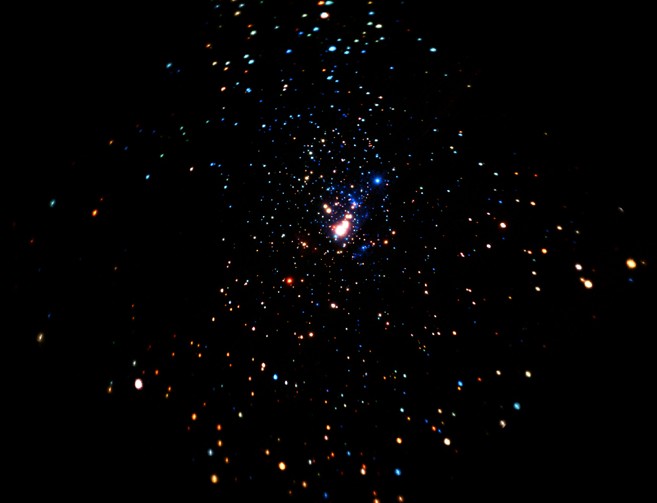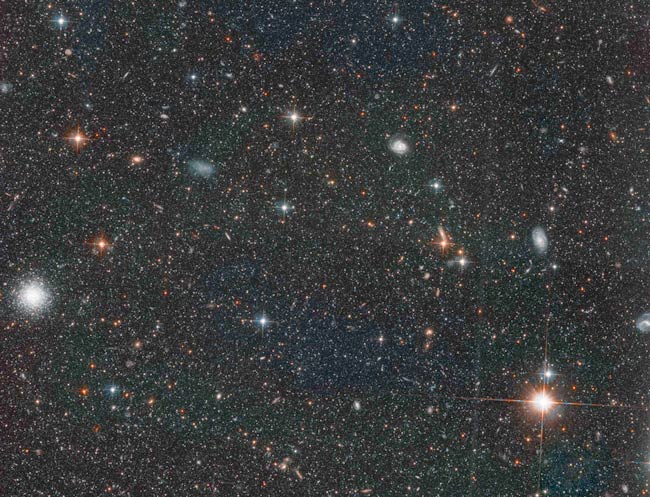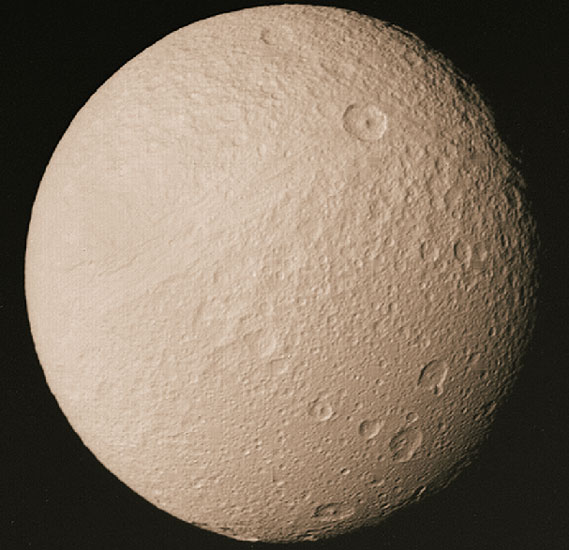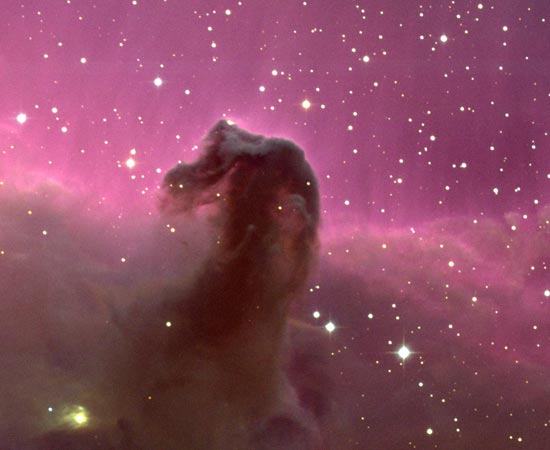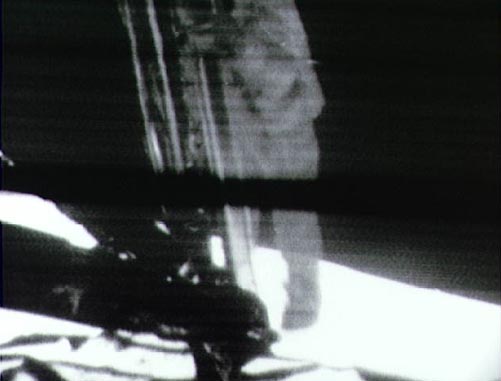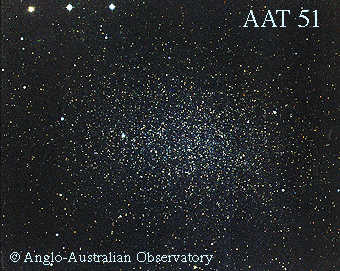| << Previous | Index | Next >> |
2015
2014 Sometimes land and sky are both busy and beautiful. The landscape pictured in the foreground encompasses Bryce Canyon in Utah, USA, famous for its many interesting rock structures eroded over millions of years. The skyscape above, photogenic in its own right, encompasses the arching central disk of our Milky Way Galaxy, streaks that include three passing airplanes and at least four Eta Aquariid meteors, and bright stars that include the Summer Triangle. The above image is a digital panorama created from 12 smaller images earlier this month on the night May 6. If you missed the recent Eta Aquariids meteor shower though, don't fret -- you may get an unexpected reprieve. Sky enthusiasts are waiting to see if a new meteor shower develops in the early morning hours of Saturday, May 24, when the Earth moves through a possibly dense cloud of dust and debris ejected by Comet 209P/LINEAR.
2013 What on Earth is that? The Richat Structure in the Sahara Desert of Mauritania is easily visible from space because it is nearly 50 kilometers across. Once thought to be an impact crater, the Richat Structure's flat middle and lack of shock-altered rock indicates otherwise. The possibility that the Richat Structure was formed by a volcanic eruption also seems improbable because of the lack of a dome of igneous or volcanic rock. Rather, the layered sedimentary rock of the Richat structure is now thought by many to have been caused by uplifted rock sculpted by erosion. The above image was captured by the ASTER instruments onboard the orbiting orbiting Terra satellite. Why the Richat Structure is nearly circular remains a mystery.
2012 Tomorrow, May 20, the Moon's shadow will race across planet Earth. Observers within the 240-300 kilometer wide shadow track will be able to witness an annular solar eclipse as the Moon's apparent size is presently too small to completely cover the Sun. Heading east over a period of 3.5 hours, the shadow path will begin in southern China, cross the northern Pacific, and reach well into North America, crossing the US west coast in southern Oregon and northern California. Along the route, Tokyo residents will be just 10 kilometers north of the path's center line. Of course a partial eclipse will be visible from a much larger area within North America, the Pacific, and eastern Asia. This safely filtered telescopic picture was taken during the annular eclipse of January 15, 2010 from the city of Kanyakumari at the southern tip of India.
2011 This dusty island universe is one of the brightest spiral galaxies in planet Earth's sky. Seen nearly edge-on, NGC 253 is only 13 million light-years away, the largest member of the Sculptor Group of galaxies, neighbor to our own local galaxy group. The detailed close-up view is a five frame mosaic based on data assembled from the Hubble Legacy Archive. Beginning on the left near the galaxy's core, the sharp panorama follows dusty filaments, interstellar gas clouds, and even individual stars toward the galaxy's edge at the right. The magnificent vista spans nearly 50,000 light-years. The frame at the far right has been compressed slightly to bring into view an intriguing pair of background galaxies. Designated a starburst galaxy because of its frantic star forming activity, NGC 253 features tendrils of dust rising from a galactic disk laced with young star clusters and star forming regions. NGC 253 is also known to be a strong source of high-energy x-rays and gamma rays, likely due to massive black holes near the galaxy's center.
2010 Long before Stonehenge was built, well before the Dead Sea Scrolls were written, ancient artists painted life-sized figures on canyon walls in Utah, USA -- but why? Nobody is sure. The entire panel of figures, which dates back about 7,000 years, is called the Great Gallery and was found on the walls of Horseshoe Canyon in Canyonlands National Park. The humans who painted them likely hunted Mammoths. The unusual fuzziness of largest figure led to this mural section's informal designation as the Holy Ghost Panel, although the intended attribution and societal importance of the figure are really unknown. The above image was taken during a clear night in March. The oldest objects in the above image are not the pictographs, however, but the stars of our Milky Way Galaxy far in the background, some of which are billions of years old.
2009 What does the center of our Milky Way Galaxy look like? In visible light, no one knows! It is not possible to see the Galactic center in light our eyes are sensitive to because the thick dust in the plane of our Galaxy obscures it. If one looks in the direction of our Galaxy's center - which is toward the constellation of Sagittarius - many beautiful wonders become apparent, though. Large dust lanes and star clouds dominate the picture. As many as 30 Messier Objects are visible in the above spectacular image mosaic, including all types of nebulas and star clusters. Two notable nebula include the Lagoon Nebula (M8), a red patch just above and to the right of center, and slightly to its right is the red and blue Trifid Nebula (M20).
2008
Click to play embedded YouTube video.
Animated Illustration Credit: Doug Ellison, Randolph Kirk (USGS), MSSS, MER, NASA
2007 Are photographs of star trails really evidence of the Earth's rotation about its axis? Yes they are, and science journalist Trudy E. Bell discovered that there is a simple way to demonstrate this, if you have the stomach for it. First, find a playground equipped with a standard Merry-Go-Round (MGR) located under or near a large, leafy tree. Seat yourself near the middle of the MGR platform. Ask a local playground expert (KID) to get you spinning very, very fast. As the scenery flashes by at a dizzying rate, point your camera skyward and take a picture with a slow shutter speed setting. The result will be similar to this excellent image of concentric, arcing leaf trails centered at a point corresponding to the MGR's axis of rotation - a convincing imitation of circumpolar star trails recorded in hours-long exposures of planet Earth's night sky. Then, just stand up and walk away ... if you still can.
2006
[imghover6=http://apod.nasa.gov/apod/image/0605/Ve ... GB_f88.jpg]http://apod.nasa.gov/apod/image/0605/Ve ... B_f88l.jpg[/imghover6]Credit & Copyright: Axel Mellinger
2005 When our middle-aged Sun was just a few million years old it was thousands of times brighter in x-rays. In fact, it was likely similar to some of the stars found in this false-color x-ray composite of the Orion Nebula region from the Chandra Observatory. The image is centered on bright stars of the nebula's Trapezium star cluster, and while analyzing the Chandra data astronomers have now found examples of young, sun-like stars producing intense x-ray flares. It sounds dangerous, but the situation may actually favor the formation of hospitable planetary systems like our own. Energetic flares can produce turbulence in the planet-forming disks surrounding the stars - preventing rocky earth-like planets from spiraling uncomfortably close to and even falling into their active, young parent stars. About 1,500 light-years away, the Orion Nebula is the closest large stellar nursery. At that distance, this Chandra image spans about 10 light-years.
2004 What caused this unusual looking crater floor on Mars? Appearing at first glance to resemble the human brain, the natural phenomena that created the unusual texture on the floor of this Martian impact crater are currently under investigation. The light colored region surrounding the brain-textured region is likely sand dunes sculpted by winds. The Mars Global Surveyor robot spacecraft that has been orbiting Mars since 1997 took the above image. Meanwhile, down on the surface, robots Spirit and Opportunity continue to roll, inspecting landscape, rocks, and soil for clues to the ancient watery past of the red planet. Humorously, this brain-terrain on Mars spans about a kilometer, making it just about the right size to fit inside the rock formation once dubbed the Face on Mars.
2003 What can you learn from looking into the depths of space? In an effort to find out true ages of stars in neighboring Andromeda galaxy's halo, astronomers stared into the galaxy giant with the new Advanced Camera for Surveys through the Hubble Space Telescope. The resulting exposure of over three days, shown above, is the deepest exposure in visible light ever taken, although shorter in duration than the multi-wavelength effort toward the Hubble Deep Field. The final image illuminated not only Andromeda (M31) but the distant universe. Andromeda's halo stars turned out to be have a wider range of ages than our Milky Way's halo stars, likely indicating more encounters with small neighboring galaxies. Visible on the above left is one of Andromeda's globular star clusters, while literally thousands of background galaxies are seen in the distance universe, far beyond M31.
2002 Tethys is one of the larger and closer moons of Saturn. It was visited by both Voyager spacecraft - Voyager 1 in November 1980 and by Voyager 2 in August 1981. Tethys is now known to be composed almost completely of water ice. Tethys shows a large impact crater that nearly circles the planet. That the impact that caused this crater did not disrupt the moon is taken as evidence that Tethys was not completely frozen in its past. Two smaller moons, Telesto and Calypso, orbit Saturn just ahead of and behind Tethys. Giovanni Cassini discovered Tethys in 1684. In 1997, NASA launched a spacecraft named Cassini to Saturn that will arrive in 2004.
2001 In April of 1970, after an oxygen tank exploded and crippled their service module, the Apollo 13 astronauts were forced to abandon plans to make the third human lunar landing. The extent of the damage is revealed in this grainy, grim photo, taken as the service module was drifting away -- jettisoned only hours prior to the command module's reentry and eventual safe splashdown. An entire panel on the side of the service module has been blown away and extensive internal damage is apparent. Visible below the gutted compartment is a radio antenna and the large, bell-shaped nozzle of the service module's rocket engine.
2000 Early April brought some of the most intense auroral storms this decade. An aurora on April 6 was reported to be the largest visible on Earth since 1989, and was seen throughout Europe and much of northern North America. On that day, many skywatchers expecting to see a rare alignment of planets were treated to a additional treat. Many reported aurorae with a relatively unusual red color. The above aurora recorded at dusk over Alaska sported the more typical green glow. A huge auroral ring can be seen superposed above trees and a building. Auroral activity occurs high in the Earth's atmosphere and is a direct result of storms on our Sun. As huge sheets of charged particles stream out from the Sun, a small fraction of these particles are funneled in by Earth's magnetic field and strike atoms high in the atmosphere, causing the sky to glow. The particles are harmless to people on Earth's surface, but can cause havoc on satellites in orbit far above.
1999 One of the most identifiable nebulae in the sky, the Horsehead Nebula in Orion, is part of a large, dark, molecular cloud. Also known as Barnard 33, the unusual shape was first discovered on a photographic plate in the late 1800s. The red glow originates from hydrogen gas predominantly behind the nebula, ionized by the nearby bright star Sigma Orionis. The darkness of the Horsehead is caused mostly by thick dust, although the lower part of the Horsehead's neck casts a shadow to the left. Streams of gas leaving the nebula are funneled by a strong magnetic field. Bright spots in the Horsehead Nebula's base are young stars just in the process of forming. Light takes about 1500 years to reach us from the Horsehead Nebula. The above image was taken with the 0.9-meter telescope at Kitt Peak National Observatory.
1998 A human first set foot on another world on July 20, 1969. This world was Earth's own Moon. Pictured above is Neil Armstrong preparing to take the historic first step. On the way down the Lunar Module ladder, Armstrong released equipment which included the television camera that recorded this fuzzy image. Pictures and voice transmissions were broadcast live to an estimated world wide audience of one billion people. The Apollo Moon landings have since been described as the greatest technological achievement the world has known.
1997 Many spiral galaxies have bars across their centers. Even our own Milky Way Galaxy is thought to have a bar, but perhaps not so prominent as the one in NGC 1365, shown above. The persistence and motion of the bar imply relatively massive spiral arms. The placements of bright young blue stars and dark dust lanes also indicate a strong rotating density wave of star formation. NGC 1365 is a member of the Fornax Cluster of Galaxies. Because NGC 1365 is relatively nearby, simultaneous measurements of its speed and distance are possible, which help astronomers estimate how fast our universe is expanding.
1996
| << Previous | Index | Next >> |
